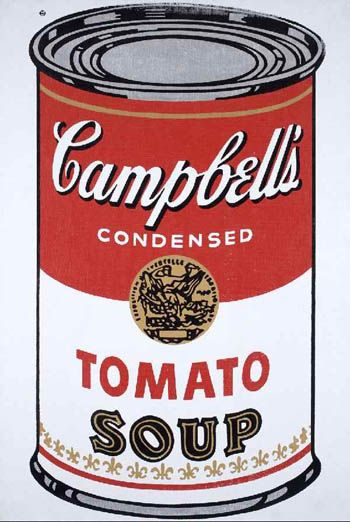By MARTINA TANGA
Stencil: a thin sheet of stiff material – like paper or metal – is perforated with a design through which ink or paint is forced onto an underlying sheet of paper. It is a simple but effective technique that has been used to create both Art and commercially mass produce images.
We tend to consider Art and commercial designs as polar opposites: one is for the elite while the other is for the masses. The former exist as a unique entity, while the latter, is one of thousands, dispersed throughout the real world. They are two categories that can never meet or even come close to being confused, except maybe, in this exhibition. The objective of this eclectic ensample of works is to show precisely the versatility of this simple modus operandi. Stenciling is a technique without preconceptions or prejudices, and therefore, malleable to different ends. The final creation transgresses and transcends the distinction of what is, and what is not, Art.
The use of stencils became popular in medieval Europe with the decoration of playing cards, wallpaper and inexpensive popular prints. Notable in the exhibition is an example of the popular images from Épinal, a town in north-eastern France, where in 1818, Jean-Charles Pellerin opened a workshop to manufacture inexpensive, wood-engraved prints with stenciled color. These stencil-colored woodcuts of military subjects, Napoleonic history, storybook characters and other folk themes were widely distributed throughout the 19th century. They were not considered Art, but rather illustrations for the purpose of popular entertainment.
So, when was the stencil technique applied to make Art? Anthony Velonis, a founding member of the FAP (Federal Arts Project in New York), coined the term serigraph. The word combines the latin word for silk, seri with the greek verb to write or draw,graphein, to distinguish fine art screenprints from commercial ones. This distinction is important because during the Great Depression, the FAP sought to employ out-of-work artists and to provide art for non-federal government buildings: county courthouses, post offices, libraries and the like. It was then that this cheap process, stenciling, became elevated to the world of fine art.
It was within this context that Guy MacCoy was the first American artist to use the silkscreen technique extensively for original, limited edition, artists’ prints. MacCoy’s career particularly illustrates the evolution of stenciling from commercial creation to Art: as an art student, he worked in a commercial printshop, screenprinting shower curtains. It is only in 1932 that he began to produce similar effects as works of Art. In the exhibition we can see his Green Fruit from 1943, a small work with high contrast of matted and vibrant colors. The texture is palpable.
The chasm between Art and commercially produced images is precisely the process’s reproducibility. In 1962, that Andy Warhol began creating images of consumer goods using a more sophisticated version of the stencil, the silkscreening technique. By placing dry, repeated images of mass-produced consumer goods in the art gallery, he transformed them into ‘dehumanized cultural icons’. Furthermore, Warhol’s industrial approach to the silkscreening process attacked the fundamental integrity of what it meant to be an artist: it suggested an emotional distance between the artist and his creative process. Warhol declared this process ‘machine-like’. In this way, Warhol purposefully blurred the bitter divide between Art and commercially produced images. From this vantage point, probably the most poignant work of this exhibition is Soup Can from 1965. It is an image of a huge can of Campbell’s condensed tomatoe soup. The contours are slick, bold and defined, the colors vibrant and assertive.
In this intimate exhibition at the Worcester Art Museum hang a powerful number of works by the most highly regarded artist of the 20th century. Works by William Lumpkins, Guy MacCoy, Joseph Albers, Louise Bourgeois, Hans Hofman, Victor Vasarely, Andy Warhol – to name just a few – are exhibited alongside works produced by almost annoymous artists whose images were to be reproduced and distributed for commercial means and popular entertainment. Here, these two categories hang side by side, on equal footing. There is no distinction emphasized. What the exhibition does assert is the celebration and appreciation of the aesthetic quality of the stencil technique and of the craftmanship involved.
----
Worcester Art Museum
"Printmaking Methods: Stencil" is on view insert until November 25th at Worcester Art Museum, located at 55 Salisbury St. in Worcester, MA.
Image courtesy of the Worcester Art Museum




